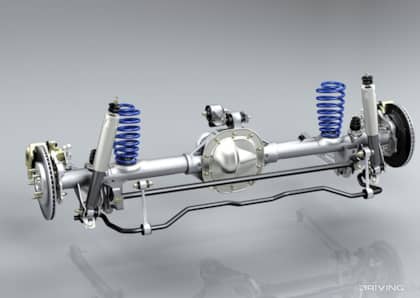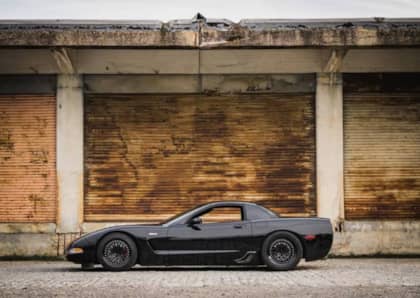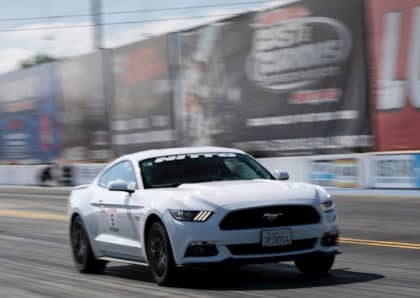Understanding Live Rear Axle Versus Independent Rear Suspension for Weekend Drag Racers
Drag racing is a great way to have fun on the weekend, but it's also one of the most stressful experiences your car's rear suspension setup will ever have to endure. When looking at suspensions, there are two primary designs that dominate the world of performance cars: solid rear axle, or 'live axle' systems, and independent rear suspension systems.
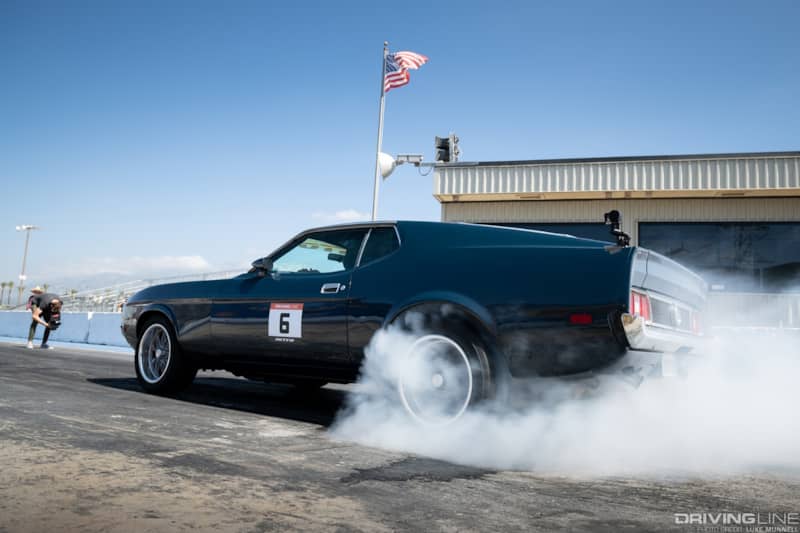
How do each of these rear suspension designs work, and how do they react in a drag racing environment? Here's a look at what happens when you line up a live axle versus an IRS down the 1320.
How A Live Axle Works
A live axle (also called a 'stick axle' or a solid axle) is one of the most basic, old-school suspension setups around. It consists of a center axle housing (sometimes called the 'pumpkin') that contains the vehicle's gear set, which is attached to straight, solid axle shafts that run to each wheel.
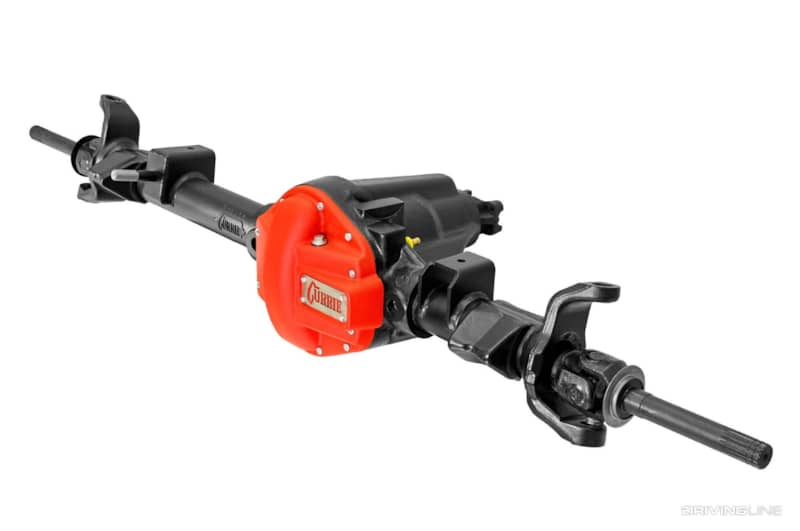
In general, a live axle's suspension attachments are quite simple. Classic vehicles (and many pickup trucks) used a set of leaf springs to connect a solid axle to the chassis and control its movements, while more modern implementations used a multi-link setup and a coil spring to provide more than one axis of control (and prevent rotation).
How Does A Live Rear Axle Perform In Drag Racing?
Aside from its relatively low cost compared to other axle designs, the primary advantage of a live axle is its strength. Since the setup is uncomplicated, there are fewer parts and points of connection to break, which helps when hooking up big power on the drag strip. Consider, too, that the primarily components of the axle—the shafts and the differential/pumpkin—can be made thick and strong as the basic linkage allows more room for these parts.
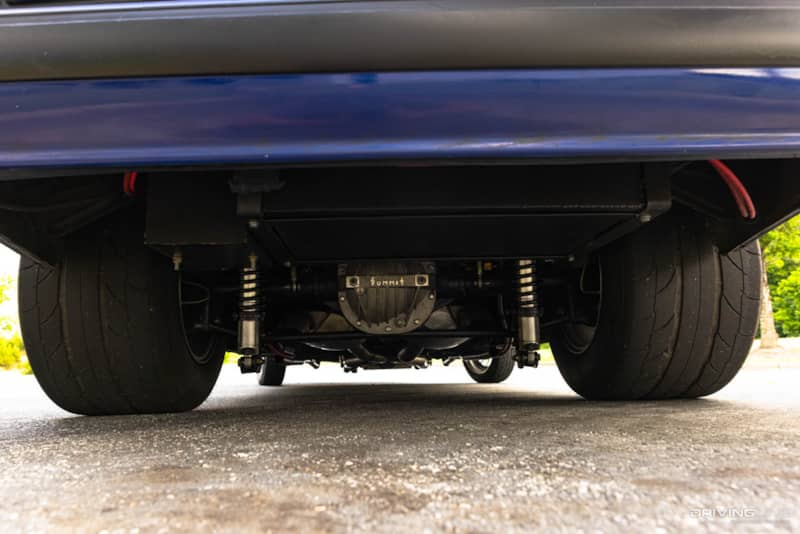
Drag racing success is all about successful power transfer, and a solid rear axle excels at delivering torque to the wheels under heavy acceleration in a straight line, especially when tuned in conjunction with a torque arm that pushes the axle towards the pavement when weight is transferred to the rear of the vehicle.
How An Independent Rear Suspension Works
Rather than operate as a free-floating, single-unit attached to the chassis via springs, independent rear suspension systems separate the attachment points of both wheels as well as the differential. With the pumpkin attached to the subframe, and each individual axle connected via its own set of springs, both wheels can move independently without affecting each other, unlike the up-and-down motion transfer experienced by a live axle.
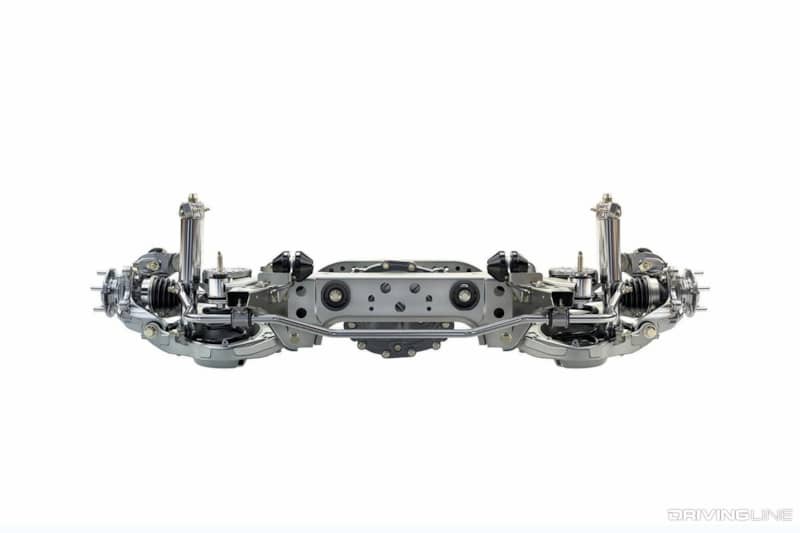
Naturally, this is more complex than a solid axle in terms of the parts required to engineer a suspension solution. It also typically requires smaller half-shafts that can fit around the additional linkage used to keep everything connected.
How Does An Independent Suspension Perform In Drag Racing?
Since the differential casing itself never moves, the axle shafts are under additional stress as compared to a live axle setup. The effects of these stress manifest themselves in two key ways.
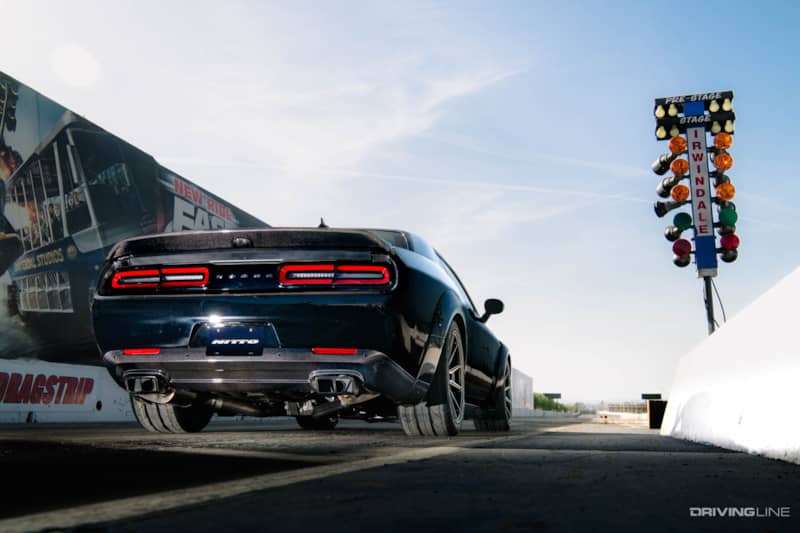
The first is 'wheel hop,' which is the term used to describe the stuttering bounce associated with an independent rear suspension trying to hook up from a stop at full throttle. This bouncing most often due to deflection from the bushings that connect the cradle and the differential to the frame, and it causes each wheel to hook up and then loose traction over and over again, leading to a hopping sensation. Once it starts, the oscillations associated with wheel hop can feed on themselves and perpetuate the traction loss.
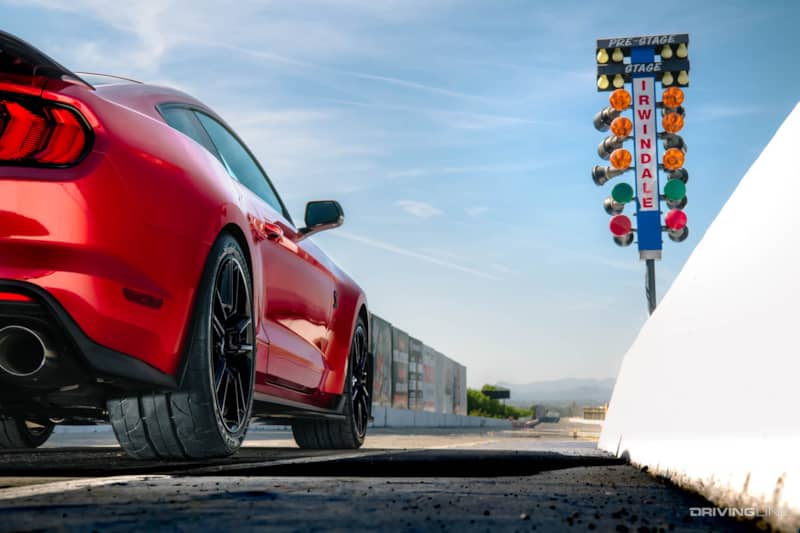
Wheel hop is not unique to independent rear suspensions, but it is far more common with this setup than it is on a live axle. It's also much more hazardous to the health of the suspension itself, which leads us to the second problem with this design when drag racing: breakage. In general, an independent rear is less beefy than a stick axle, which makes it more vulnerable to damage under a heavy load. Throw in the fact that it also has more components to break, coupled with the magnifying effects of wheel hop, and it's easier to snap something in an independent rear than a solid rear. It's also worth pointing out that an independent rear suspension can be heavier than a stick axle due to the extra components involved. In drag racing, a little weight can go a long way towards adding time at the end of the quarter mile.
Which One Is Better?
Out of the box, for most front-engine, rear-wheel drive cars a simple solid axle offers the best straight line acceleration performance. For mid-engine monsters without a front-biased weight balance an independent rear will likely prove more effective in terms of all-out drag racing performance.

Within those two very broad statements, however, lurks an entire aftermarket universe of solutions designed to improve both axle designs. For example, even something as simple as moving from factory rubber bushings to polyurethane bushings can help reduce instances of wheel hop, to say nothing of the braces, cradles, differential mounts, and shock setups that aim to do the same. It's also possible to opt for aluminum components that can reduce the weight of an independent rear.
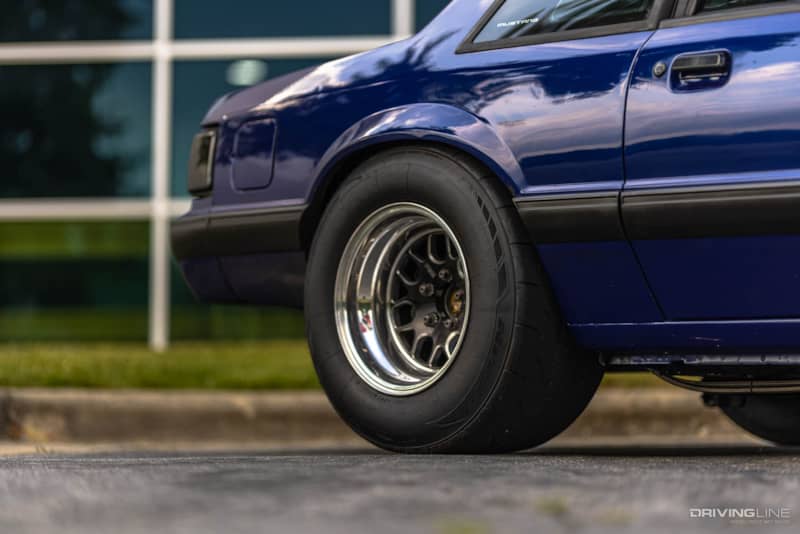
Depending on which vehicle you own, you may not have much of a choice in terms of what type of rear axle design you are working with unless you are willing to spend big bucks on a swap. Before going that far, it's always worth it to investigate the aftermarket solutions out there to help your car hook up at the drag strip reliably and repeatably.




